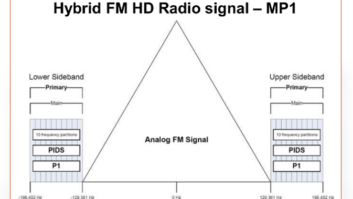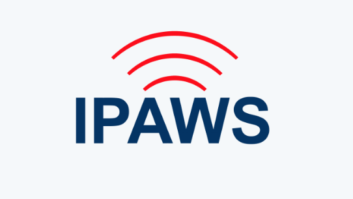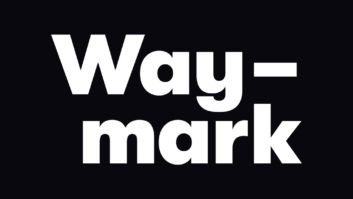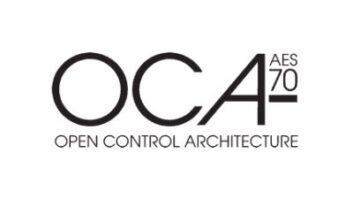IBOC Update – Sept. 21, 2005
Sep 21, 2005 10:41 AM, By Mark Krieger, CBT
Stay up to date on the latest IBOC news, business and technology information with the twice-monthly newsletter from Radio magazine.
Index:
- Canadian Satellite Radio Survives Challenge
- IBOC Translators Could Debut Soon
- SRS Demonstrates Circle Surround at CEDIA
- More Automakers to offer Ipods
- Ibiquity Certifies Audemat-Aztec FM IBOC Monitor
- HD Radio takes Center Stage at NAB Radio Show
- Digital Radio Marketing Lessons From Abroad
- IBOC by State: Massachusetts
- An Introduction to the New Language Surrounding HD Radio
- New Information on Motorola’s Iradio Project
To receive these articles twice a month in your e-mail, subscribe to the IBOC Update – Insight on HD Radio e-newsletter. Click here to subscribe.NewsCanadian Satellite Radio Survives Challenge
It appears now that Canadians will have the opportunity to sign on with satellite radio providers, but may consequently wind up without access to a proposed terrestrial radio service, as a political challenge to new satellite services was sidelined by that nation’s parliament on Sept. 9.After what three Canadian Ministers of Parliament (MPs) termed a careful review of dissenting petitions, the Government of Canada upheld the CRTC’s licensing of Canadian Satellite Radio (CSR) and Sirius Canada to operate satellite radio subscription services there.Five petitions requesting reconsideration of the license grants had raised concerns about the amount of Canadian and French-language content that would become available on satellite radio. The licenses required the satellite carriers to provide only 10 percent content of Canadian origin, and only 2.5 percent to be broadcast in French.A recent request by CSR and Sirius Canada for the CRTC to amend their licenses to virtually double the percentage of Canadian and French-language programming offered seems to have played a pivotal role in the government’s decision. The proactive move by the satellite providers may have mitigated some of the cultural backlash emanating from eastern Canadian provinces, giving MP’s the opportunity to back away from intervening in the CRTC decision.In addition, the CRTC agreed to hold a public review of the license amendments, thus enabling Canadians to express their views on issues such as the impact of new technology on Canadian content and consumer choice.In what appears to be an unforeseen consequence of the government’s acquiescence to the new satellite services, CHUM/Astral Media has subsequently announced that it may indefinitely delay or even cancel the planned launch of its national, terrestrial-based subscription radio service, even though the CRTC has already granted the group’s request for a license. Company representatives say that a decision to scuttle the plan would be based on a competition glut brought on by the pending entry of Sirius and CRS into the national radio market.IBOC Translators Could Debut Soon
Non-commercial FM broadcasters struggling with the question of how to distribute their HD Radio hybrid signals through numerous translators may soon have an answer, according to inside reports from a few transmitter manufacturers.Recent postings in a public radio engineering mail list indicate that several transmitter makers, including Crown, Larcan and Armstrong are developing what are being dubbed as “pass-through” translators that are able to satisfactorily reproduce FM HD Radio signals with little reprocessing of the digital signal component required.Whether such translators can be produced economically is a major concern to many public radio outlets that rely on translators to bring their signals to geographically isolated communities and rural districts while operating under severe budgetary restraints. In some case, these translator webs can be extensive.Sources within the manufacturing arena provided little in the way of specific technical detail, but there is speculation that demodulation of the hybrid IBOC digital may not be required to produce a satisfactory translator output if highly linear design techniques are employed. Some reports speculate that operable prototypes may be demonstrated as early as this coming January.BusinessSRS Demonstrates Circle Surround at CEDIA
During the CEDIA Expo, HD Radio held an invitation-only event at Emmis Communications’ headquarters in downtown Indianapolis, where the featured demonstration was a live broadcast of SRS Circle Surround encoded material that was decoded through the Yamaha RX-V4600 to the CEDIA crowd, press, OEMs and other attendees.Circle Surround is a multichannel encode and decode system capable of supporting a wide range of surround sound creation and playback applications. It can encode up to 6.1 channels of audio for transmission or storage over two output channels or standard two-channel carriers.CEDIA is the Custom Electronic and Design Installation Association and the CEDIA Expo is a convention for the residential electronic systems industry.More Automakers to offer Ipods
Buyers of Audi, Volkswagen and Honda cars will soon have an Apple on their option menu, according to the makers of the ubiquitous Ipod audio player. Speaking at a recent press event in San Francisco, Apple CEO Steve Jobs boasted that the company’s Ipod player will become available as a factory option in about 30 percent of all 2006 car models available to consumers in the United States. Audi, Volkswagen and Honda will join 15 other auto manufacturers already supporting the option.In exchange for the added sticker price, new car buyers will enjoy the convenience of having their Ipods fully integrated with the car audio system, with access jacks mounted in a glove box or center console. Honda and its Acura division even plan to offer a text and speech interface to allow drivers to manage playlists while operating the vehicle. Jobs estimates that about five million cars will be sold with the Ipod option in the coming model year.Ibiquity Certifies Audemat-Aztec FM IBOC Monitor
Ibiquity Digital has certified Audemat-Aztec’s Golden Eagle HD radio monitoring system as fully compliant with HD Radio standards. The Golden Eagle HD FM monitors quality and continuity of analog and digital parameters in FM HD Radio hybrid transmission systems. The device provides monitoring of QI, SNR, DAAI, SIS, RDS, analog audio levels and analog RF level. It also provides decoding functionality for secondary programming services (SPS) and measures time and level alignment to facilitate digital and analog audio blend optimization. The Golden Eagle HD includes an embedded Web server for remote monitoring via TCP/IP connectivity.HD Radio takes Center Stage at NAB Radio Show
Visitors to the Ibiquity Digital booth at the NAB Radio show have lot to see and do. Among the attractions offered to IBOC-savvy convention goers will be a bevy of HD Radio receivers, live multicast and data demonstrations, and a cover-to-cover peek at the new HD Radio Playbook. In addition, Ibiquity executives will be featured in three conference sessions focused on the promotion and deployment of HD Radio technology. On display in the Ibiquity’s booth: - HD Radio receivers will be on display from Boston Acoustics, Eclipse, JVC, Kenwood, Panasonic, Polk, Radiosophy, Sanyo and Yamaha.
- An HD Radio integration solution for OEM car audio control head’s offered by DICE Electronics, which is said to allows consumers to listen to digital AM/FM HD Radio signals with many existing vehicle audio systems, without having to replace their factory-installed car radios.
- Live multicast programming courtesy of Beasley Broadcasting’s WXTU-FM 92.5. The station recently began multicasting a new sister format, XTU-Channel 2, featuring breaking country music artists.
- A kiosk featuring a Real Traffic demonstration with Smart Route systems from Westwood One will show how HD Radio technology can be used to provide local traffic updates.
- Live access to HDRadioPlaybook.com, a website launched this summer to provide broadcast executives and station personnel with tools for promoting and explaining HD Radio to radio consumers.
But the IBOC digital action won’t be confined to the Ibiquity booth. HD Radio systems and applications will also be featured at the booths of Broadcast Electronics, Harris, Radiosophy and Traffic.com.There will also be three sessions on HD Radio held in the Pennsylvania Convention Center: - “HD Radio for PDs,” Sept. 22, from 10:30 a.m.-1:45 a.m., Room 201A.
- “Data Technologies and Applications for Digital Radio,” Sept. 23, from 8:00 a.m.-10:00 a.m., Room 201B.
- “Selling Radio in a Digital Age,” Sept. 23, from 10:30 a.m.- 11:45 a.m., Room 204A.
For more information on HD Radio relate events at the NAB Radio Show, go to the Ibiquity website at www.ibiquity.com.Eye on IBOCDigital Radio Marketing Lessons From Abroad
American broadcasters are not alone in trying to chart their way across the digital radio straits. A recent article in the British industry journal Media Week offers some clues on how Europe is addressing the task. Listed below are a few of the suggestions with salience for digital broadcasting on our side of the Atlantic. - Achieve universal access. See to it that before you promote the virtues of digital radio to consumers nationwide that some service is available in every market.
- Bring the cost of radios down. The $100 (U.S.) price point is where most consumer resistance to buying another radio is likely to fade quickly, both in the UK and America.
- Create high quality, innovative programming. Old wine in new bottles will simply convince consumers that radio really is at the end of its ropes. And techno-gimmicks like text displays are only a sidebar to what radio at its best is capable of–delivering compelling content
- Limit choice. Don’t overwhelm consumers with multi-multicasts and complicated programming and operating options all at once. Help them to make the transition gracefully– remember that radio hasn’t changed much in the last 40 years and that the industry cannot live on early adopters alone.
- Push for digital to be built into cars. Broadcasters need to convince the automakers that digital radio is a plus for them by doing whatever it takes to get the job done. Widespread acceptance of digital radio won’t happen without the factory option
- Remember the 3Ms–Marketing, marketing and more marketing. Really good marketing can sell even a mediocre product–just imagine what it can do for digital radio.
IBOC Across America IBOC By State: VermontIbiquity has a list of stations that have licensed HD Radio technology and notes those that are on the air now. IBOC by state will look at various states and list the stations that are making the transition.Station Format Market Owner On Air Multicasting WBTN-FM 94.3 Cls/Nws/Inf Bennington Vermont Public Radio No No WVPS-FM 107.9 Cls/Nws/Inf Burlington-Plattsburgh, VT-NY Vermont Public Radio No No WNCH-FM 88.1 Classical Lebanon-Rutland-White River Junction, NH-VT Vermont Public Radio No No WRVT-FM 88.7 Cls/Nws/Inf Lebanon-Rutland-White River Junction, NH-VT Vermont Public Radio No No WVPR-FM 89.5 Cls/Nws/Inf Lebanon-Rutland-White River Junction, NH-VT Vermont Public Radio No No WVPA-FM 88.5 Cls/Nws/Inf Montpelier-Barre-Waterbury Vermont Public Radio No NoHD Radio Terminology An introduction into the language surrounding IBOC.OFDM subcarrier: A narrowband PSK or QAM-modulated carrier within the allocated channel, which, taken together with all OFDM subcarriers, constitute the frequency domain representation of one OFDM symbol.Reference subcarrier: Dedicated OFDM subcarrier modulated with the SCCH data. There are as many as 61 reference subcarriers depending on the mode (for FM) and as many as four for AM.ProductsNew Information on Motorola’s Iradio Project
More details regarding the pending introduction of Motorola’s Iradio project surfaced at a Las Vegas technology conference last week. Speaking before a group of technology analysts, Motorola marketing spokesperson David Ulmer gave more insight about his company’s attempt to cash in on the growing popularity of podcasting and programmable MP3 player technology.In a challenge to the Ipod, as well as satellite and terrestrial radio providers, Motorola’s Iradio service will permit users to download 10 hours of custom radio programming from content providers anywhere on the Internet for about $7 a month. Ulmer said his company has already signed a number of agreements with radio syndication houses and networks that will become part of the provider portfolio, dubbed “Ilike Radio.”In addition to downloaded broadcasts, consumers will also be able to load and play their own MP3 files.According to Ulmer, one key to the system’s appeal will be a Bluetooth interface that allows wireless upload of programming through the consumer’s home PC and wireless high quality playback through home and car audio systems equipped with a Bluetooth adapter. He also noted that Motorola will eventually make its entire handset line compatible with the system, and will offer the service through a number of national wireless service providers.Motorola made a preliminary introduction of the technology earlier this year, but the company says a formal launch is now planned for the Consumer Electronics Show scheduled for Las Vegas in January.












